Greenish Uranus is considered to be the dullest planet of the solar system. And yet we do have something interesting to tell about it.
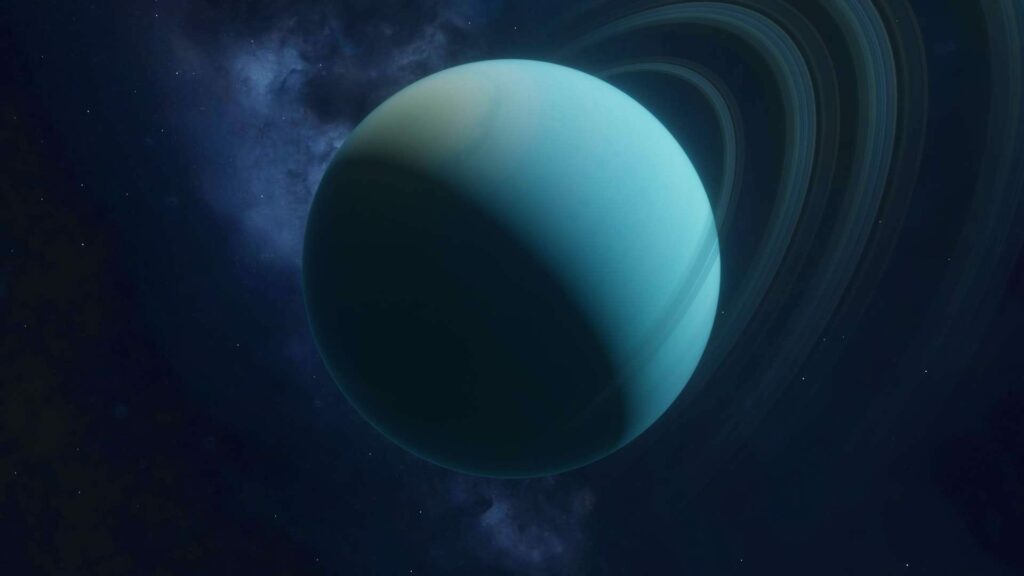
1. Uranus is the first planet discovered in modern times
Uranus is the seventh planet from the Sun. However, it is the first planet whose discoverer is known to us. Mercury, Venus, Mars, Jupiter and Saturn were well known to the ancient Greeks. As for the other planets, humanity was not aware of them until the 18th century.
Uranus was discovered by the English astronomer William Herschel. First and foremost he was a “comet hunter,” and when he saw a misty dot moving among stars in 1781, he first thought he had discovered another “tailed visitor.” Interestingly, sky researchers had seen Uranus at least 21 times before that, but mistook it for a very faint star.

2. Uranus was named after the ancestor of gods and titans
Uranus was named after the Greek god of the sky, the son of Chaos. This is the only planet named not after the Roman god, but his Greek counterpart. According to myths, all the other great celestial bodies, including Pluto and Ceres, are his children, grandchildren or great-grandchildren. And only Gaia-Earth is his sister.
In addition to the inhabitants of Olympus, the mythological Uranus gave birth to nymphs, titans (who later waged war with gods), single-eyed giants Cyclops and hundred-handed giants Hecatoncheires.
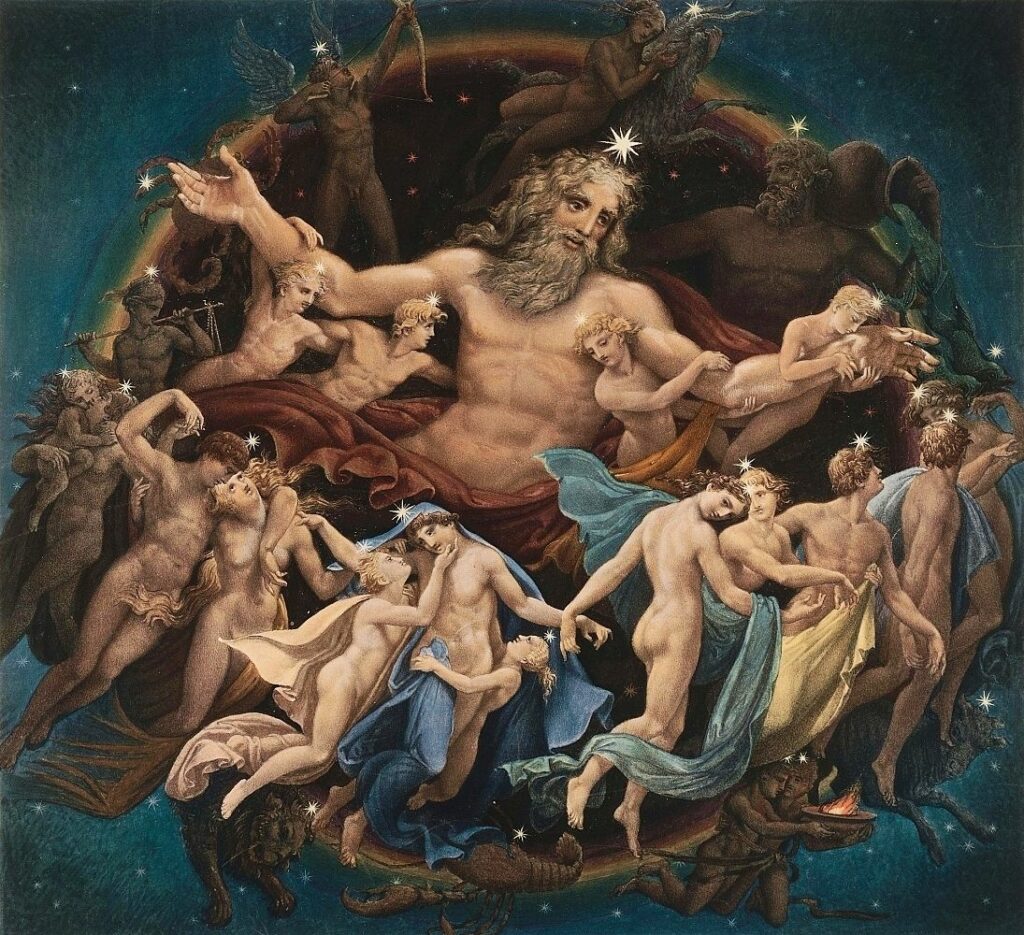
3. The planet was suggested to be named after the king of England
The planet could have been named not after the Greek god, but after the king of England. At least Herschel himself, when asked to name the discovered object, suggested Georgium Sidus (George’s Star). That is, it was proposed to name the seventh planet of the solar system in honor of George III, who was on the English throne then.
The name of the planet had remained disputable for decades. Some wanted to name it after the astronomer himself. The name George’s Star lasted the longest in Britain — only in 1850 did the British conceded to call it Uranus.

4. Uranus is going to have next summer solstice In 2028
The average distance from Uranus to the Sun is 2.8 billion km. Because of this, one rotation around the luminary takes 84 terrestrial years. There is a change of seasons on the planet, and in 2007 it had the vernal equinox (for the northern hemisphere).
And next summer solstice on Uranus will come only in 2028. Before that it took place in 1944. So a human who is one local year old has all grounds to be proud of his or her longevity.

5. One can test his or her eyesight with Uranus
Despite the fact that Uranus is located far from the Sun and had eluded astronomers for many centuries, it is still possible to see it with the naked eye. The apparent magnitude of the planet ranges from 5.7 to 6.0.
So, if you want to see Uranus without binoculars, you need to have ideal conditions and the same vision. But even providing all that, it is seen only as a barely visible star. To discern more you have to use some astronomical instruments.
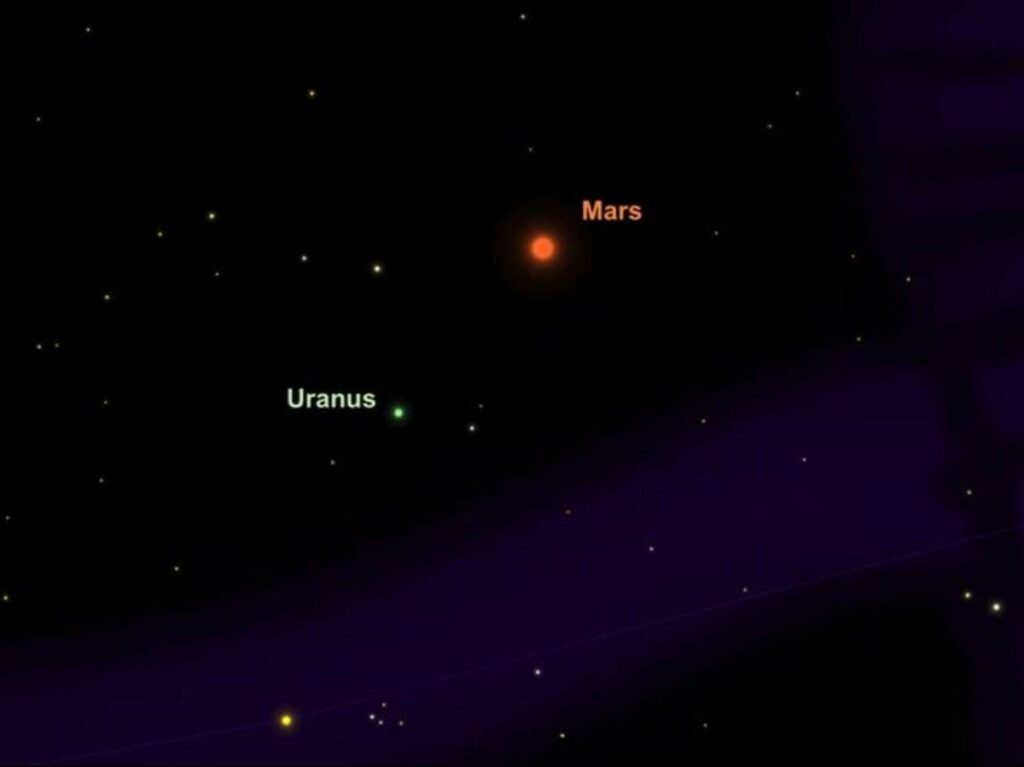
6. Uranus is a rolling planet
The inclination of the equator of Uranus to the plane of its orbit is 97 °. This means that the planet is moving, as if lying on its side being turned slightly “upside down”. It could be said that it “rolls” along its orbit, but the direction of rotation is the opposite of what an imaginable wheel would have in this case.
Due to this, there is no normal change of day and night on Uranus. For almost 42 years, one pole is constantly illuminated by the Sun, and the other is immersed in gloom. And only at the equator the day is similar to ours, although much shorter. So by day the Sun moves in a circle above the horizon, sometimes hiding behind it.

7. The magnetic field of Uranus is not tied to the center of the planet
As on Earth, the magnetic poles of Uranus are offset from the true ones. The south magnetic pole is located in the northern hemisphere, and the north — in the southern one. Meanwhile the magnetic axis does not pass through the planet’s center.

This unusual situation is most likely due to the fact that Uranian magnetic field is not created by the nucleus, but by areas in outer layers, where significant flows of matter take place. Therefore, the center of the magnetic dipole of the planet is located at a distance of 1/3 from the celestial body’s center.
8. Uranus has the coldest weather in the solar system
Neptune is farther from the Sun than Uranus. And the average temperature on its surface is lower than on its less distant neighbor. Nevertheless in the absolute terms the coldest place is found on the seventh planet, not the eighth one. It is found in the lower atmosphere of Uranus.
The lowest temperature recorded here is -224 degrees Celsius. The reason for such extreme conditions is the long “polar nights”, when some parts of the surface do not see sunlight at all for more than 40 years in a row.
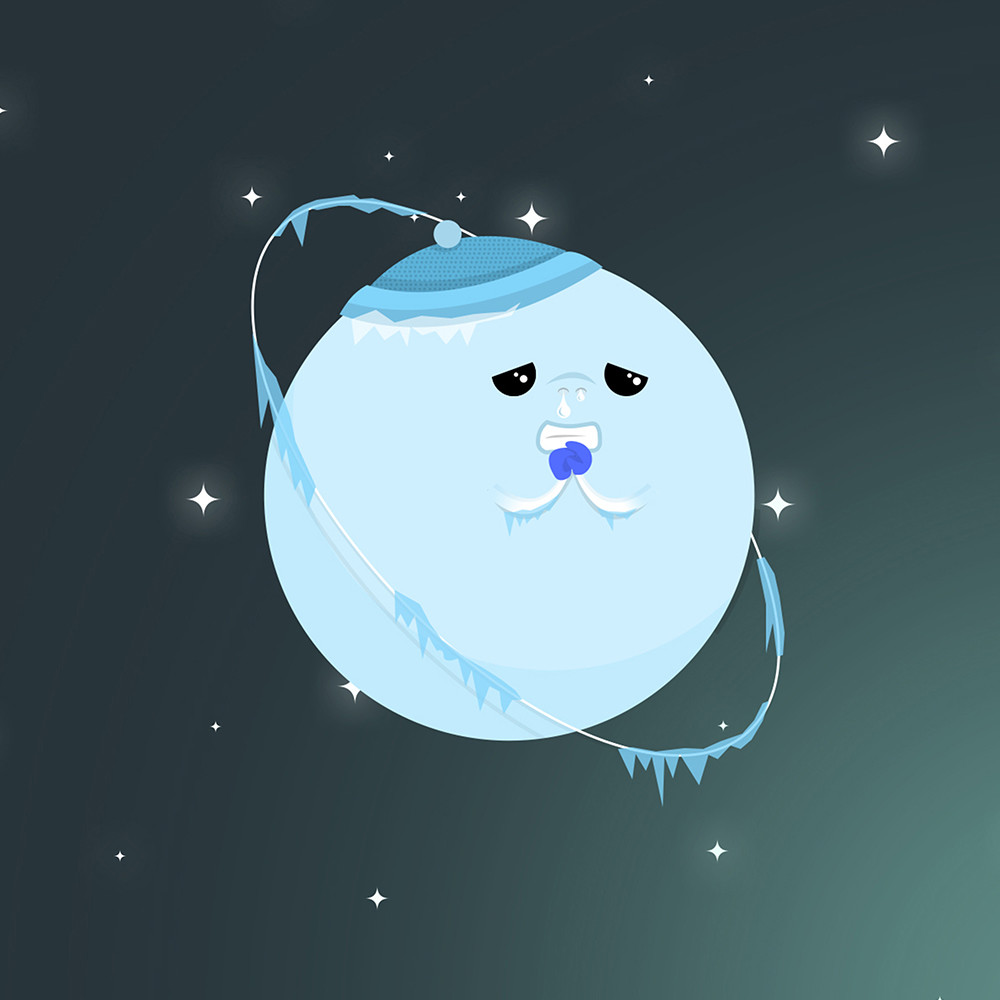
9. There is a dark spot on Uranus
Uranus’ atmosphere is considered to be the calmest among the giant planets. When the Voyager 2 spacecraft first approached it, scientists saw only a few small clouds. But some atmospheric inhomogeneities still exist there.
Proof of this is the Great Dark Spot, found on Uranus in 2006. It is similar to the same phenomenon on Neptune. This is an incredibly powerful hurricane, where the wind speed can reach 200 m/s.
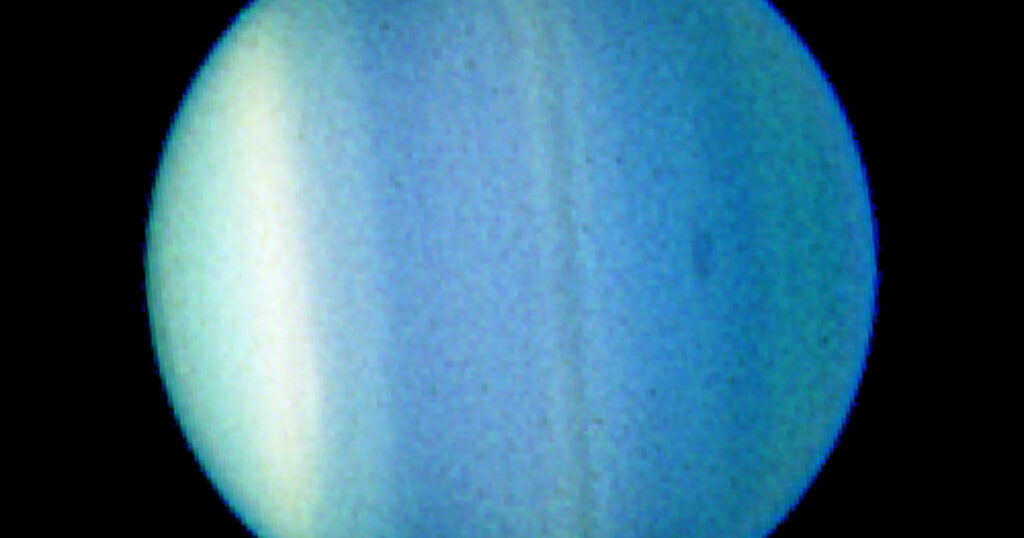
10. Uranus stinks of rotten eggs
In 2018, the composition of the upper layers of the Uranus atmosphere was determined using a NIFS spectrograph. It turned out that the clouds in this layers consist of frozen hydrogen sulfide. This is the same substance that gives that inimitable “flavor” to rotten eggs.
The presence of this substance in the upper layers of the planet indicates that Uranus did not form in the orbit in which it is now. Like all giant planets, it was born closer to the Sun and migrated to its current location in the first tens of millions years of its existence.

11. Uranus has 13 rings
Uranus rings were discovered in 1977. This was the first object of this kind that people have seen since the discovery of Saturn’s “jewelry”. The discovery was made by accident, while observing the planet overlapping a distant star.
Uranus has a total of 13 rings. Two of them were discovered only in 2005. Interestingly, William Herschel wrote about the observation of such structures, but contemporary researchers doubt he could actually see them.
12. Satellites of the planet are named after the characters by Shakespeare and Pope
The names of all 27 known satellites of Uranus are inspired by English poetry and drama. Three of them —Ariel, Umbriel and Belinda — are named after the heroes of Alexander Pope’s poem The Rape of the Lock.

The rest are named after the characters of various works by William Shakespeare. The play The Tempest was the luckiest in this respect: the names of its characters were bestowed to 9 satellites of the seventh planet. There is also a character named Ariel there, so it may be assumed that this source provided 10 names to Uranus’ moons.
